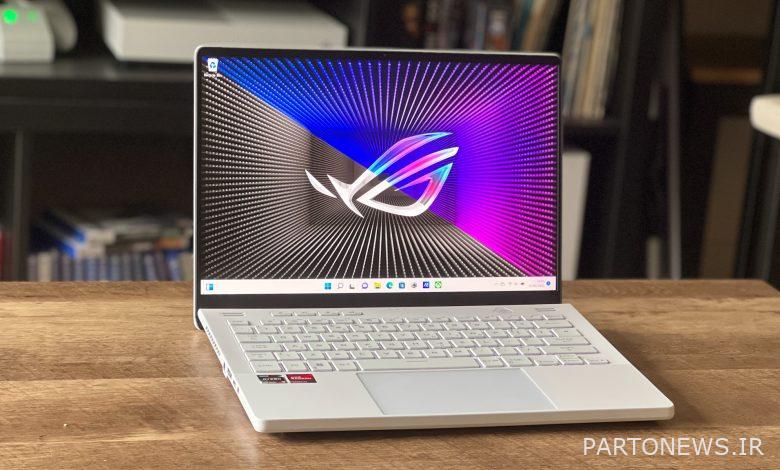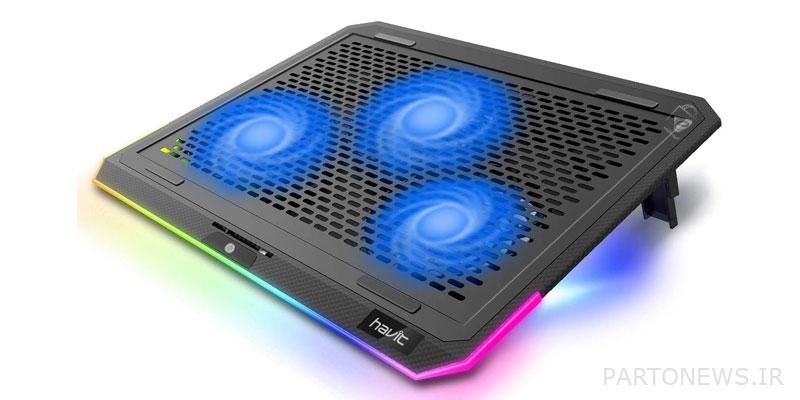How to fix the laptop heating problem? (3 methods)

Like any electronic device, a laptop also produces heat in return for energy consumption. The internal parts of the laptop dissipate the consumed electricity like any other electronic part in the form of heat, and for this reason, they get hot during heavy use, and it is normal for the laptop to heat up during heavy use. But if your laptop heats up abnormally during normal and everyday use, it may have a problem.
How to fix laptop heating problem
First of all, you need to see if your laptop is really overheating. Normal heating of the laptop during light – and even heavy – use is not what we are talking about, because heating is a natural property of the laptop and its internal components. We are talking about a situation where the laptop’s cooling system has malfunctioned and cannot dissipate the heat produced by the laptop’s internal parts well.
To check the temperature of the internal parts of the laptop, the software HWMonitor Download and install on it (picture above). This software shows you the temperature of the internal parts of the laptop. We deal with the processor as the main heat source of the laptop more than the rest of the parts. In general, the temperature of the laptop processor should be around 50 degrees during idle and normal use, and around 80 degrees Celsius during full load and heavy use. If the temperature of your laptop in these two modes is very different from these numbers (over 60 degrees for idle mode and over 95 degrees for full load mode), it can be said that your laptop is overheating and you should fix this problem. Do.
First method: service the laptop cooler
The cause of the laptop heating problem is the weakness of its cooling system. In fact, the cooling system cannot remove the heat from the laptop as fast as it is produced.
Usually, when you use a laptop for a few years, its cooling system needs service. The cooling service can improve its performance and most likely, solve the laptop overheating problem.
For cooling service, first unplug and turn off the laptop and disconnect all the cables from it. Then discharge your body by touching a large metal object (door frame, room radiator, large heater…). Then go through the following steps:
- Open and remove the back cover of the laptop.
- With an anti-static brush and a vacuum cleaner, clean the thick and thick dust that has accumulated inside the cooling system of the laptop after several years of use.
- Get a can of dry air spray and spray the inside of the fins of the heatsink as well as the fan blades with it. The intensity of the dry air spray output is enough to remove most of the dust from inside the cooling system.
- This step is somewhat specialized; Get some good quality silicone paste. Then open the heatsink and separate it from the processor. With a cotton or tissue soaked in isopropyl alcohol (90% medical alcohol can also be used), remove the old and dried silicone paste from the surface of the processor and heatsink. Then, apply a pea-sized amount of silicone paste on the surface of the processor and place the heatsink on it and screw it.
Second method: Place the laptop on suitable surfaces
If you have a habit of placing your laptop on uneven surfaces and in an inappropriate manner, we must say that heating up the laptop in these conditions is obvious! The ventilation slots of the laptop are located below it, and if you put your laptop on fabric and fluffy surfaces such as bedspreads, carpets and carpets and put it under pressure, it is clear that the laptop heats up.
Preferably, put your laptop on smooth and lint-free surfaces. If there are no flat surfaces where you use your laptop, you can buy a simple and inexpensive laptop stand and place the laptop on it.

Method 3: Buy a cool pad
If you have done the above solutions and your laptop still overheats, it may mean that its cooling system does not have enough power to cool the internal components. In this situation, you should get an external cooling system for your laptop to help the main cooling system. The most available external cooling for laptops is Coolpad.
A good cool pad, with its fans, helps circulate the air inside the laptop and improves the performance of its cooling system. In addition, the cool pad also acts as a laptop support base and is considered a suitable place to place the laptop.
We hope this article was useful for you. What do you think about the suggested solutions to solve the laptop overheating problem? In your opinion, what solutions are missing in this list? Be sure to share with us in the comments section.
Related posts
No points
wait a little…

